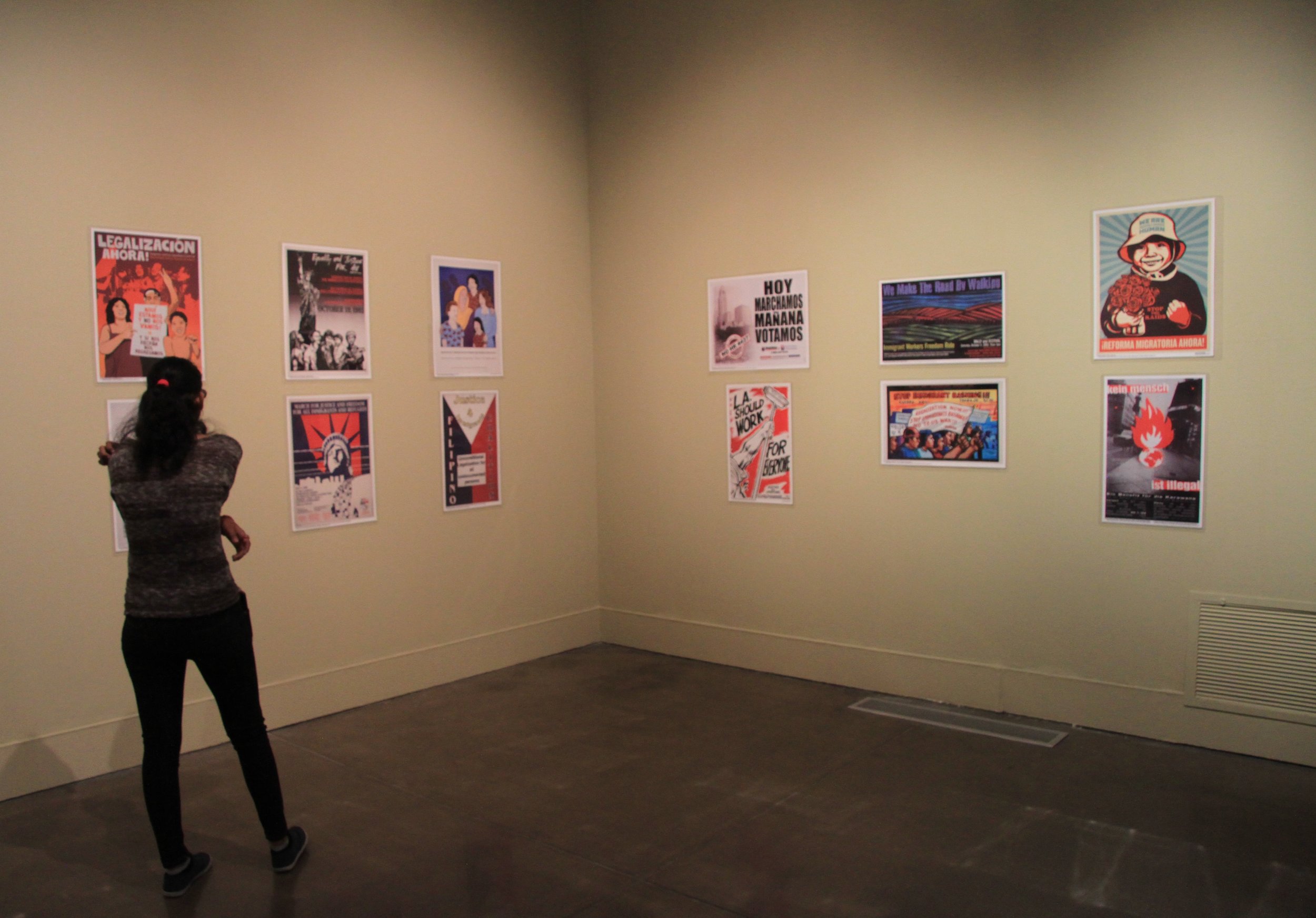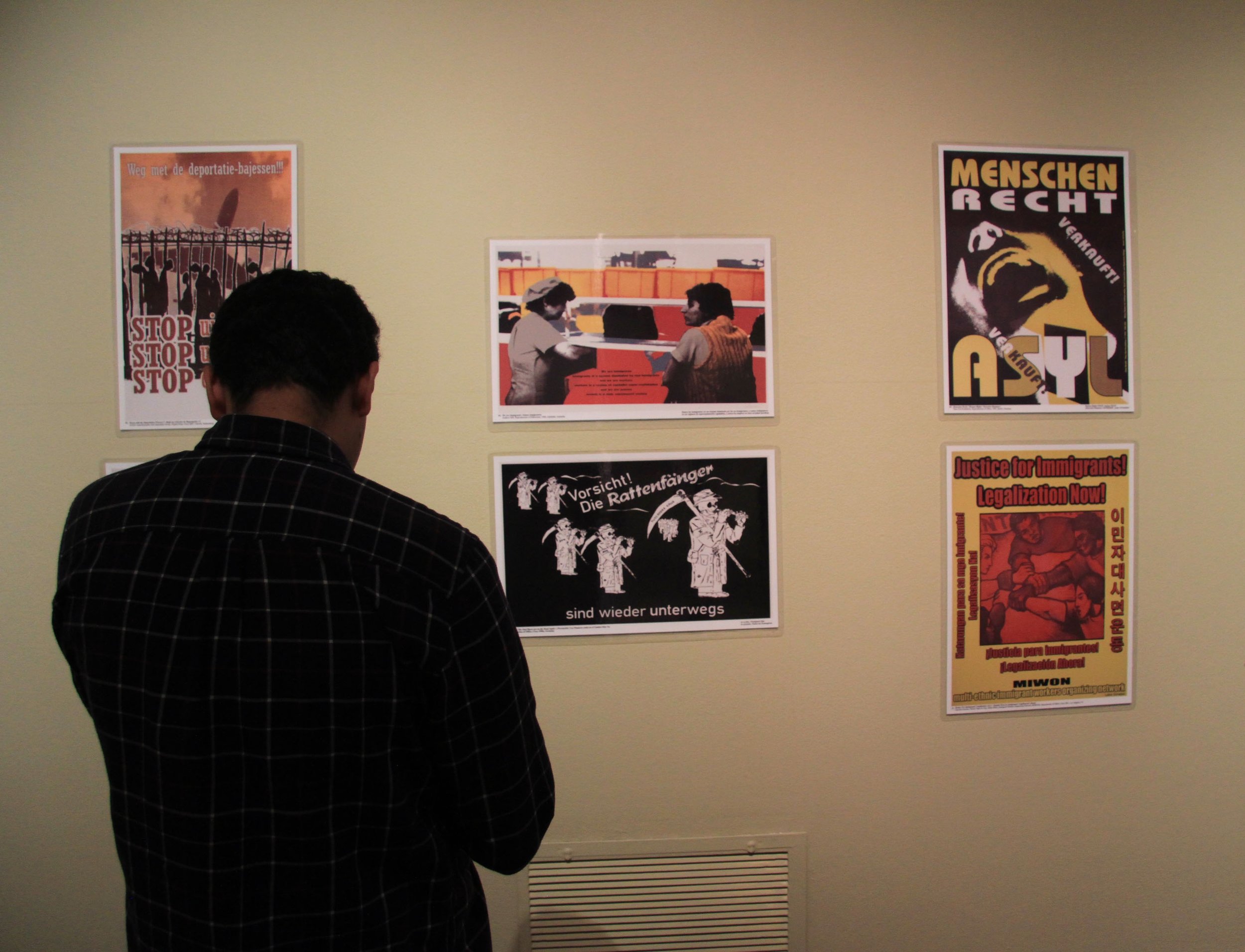Empathy Through Art
By Charlie Vargas
@CharlieVargas19
A little boy with no name, smiles to a distance with hope in his eyes. One fist is clenched shut with excitement while the other holds a bouquet of roses. This boy has no pulse. Life, instead is granted through his message delivered to the observer.
This is just one of the many art posters showcased at the Wignall Museum’s new exhibit, “No Human Being is Illegal: Posters on the Myths & Realities of the Immigrant Experience” combining an artistic expression with the world of politics.
Rebecca Trawick, director of the museum strives to showcase art that analyzes pressing social issues that are relevant across all disciplines, while utilizing the space as a learning lab. This exhibit revolves around immigration, an issue both on a national and local level.
“I think immigration is really important this year, because being an election year there is a lot of discourse in the media,” Trawick said. “We live in southern California and immigration is a profound issue for our communities.”
The immigrant experience is told through a variety of posters but it is not limited to one specific issue, instead it intersects between the communities and their various struggles.
“You’re looking at legislative policy, effects of war, issues for LGBTQAI communities, all these different sorts of subsets that fall under the umbrella of immigration,” Trawick said.
For some, the art’s message was a brand new experience but for others it was a personal reminder of how immigration affects their lives and country they inhabit.
Ashley Huerta, major unknown, felt those affects when her father was deported. She empathizes with those who are in similar situations.
“I haven’t seen him in eight years,” Huerta said. “It sucks waking up one day and them not being there.”
Others like, Dina Noya, major undecided, is an immigrant herself and felt a personal connection to some of the posters.
“It really touched something inside,” Noya said. “We’re not all criminals breaking the law, we’re just humans separated by borders.”
Above: Students observing the museum's art pieces on Sep. 14. Photos by Charlie Vargas.
Ray Cuellar, a grant writer for the college, believes it is a beneficial opportunity for viewers to experience other histories that may not be fully analyzed in traditional American history. He also said it helps give context to the reasons behind migration.
“It opens the conversation to hear our story of our struggle, our story of our migration and our story of our traditions,” Cuellar said. “For thousands of years our people have migrated to where work needed to be done in order to provide for our families, and ultimately that’s what it’s all about.”
Art is expressive which makes it the perfect medium for communities to express their frustrations to those lacking in their understanding of immigration.
“I think for the most part we as a human population are visual learners. An image that you have of people working, or of a child, or of a family struggling, even without any words, that itself carries the message of our struggle,” Cuellar said.
Art also serves as a bridge toward empathy, a concept that Trawick hopes spectators will leave with.
“I hope that viewers will walk away with an empathetic viewpoint or a new viewpoint,” Trawick said. “I think it’s easy to walk in and say, here’s what I think about immigration, but if you can understand the nuances in all the different communities maybe it can give a new perspective.”


